Body Hacking – Man Rejuvenating Body with DIY Gene Therapy
Summary: One man is self-experimenting with DIY gene therapy on the theory that a human growth hormone-boosting gene implant might rejuvenate him without side effects. This article first appeared under the title ‘Can We Rejuvenate Our Bodies with HGH Boosting Gene Therapy?’ on LongevityFacts. Author: Brady Hartman.
Can human growth hormone (HGH) boosting gene therapy rejuvenate our bodies without side effects?
One man certainly thinks so and has already started experimenting using a novel method to boost his flagging levels of growth hormone.
Human growth hormone and insulin-like growth factor (IGF-1) are closely related steroid hormones which stimulate muscle and bone growth. Our bodies naturally produce less HGH as we grow older, and scientists have discovered an inexpensive gene therapy based on DNA plasmids that stimulate an aging body to manufacture more growth hormone.
HGH Boosting Gene Therapy
Boosting HGH with plasmid therapy has worked wonders in farm animals. In fact, a company called VGX Animal Health has been performing gene therapy experiments with plasmids for over a decade. In a recent interview with MIT Technology Review, Douglas Kern, a veterinarian who used to work for VGX said
“We never did try it [HGH-boosting plasmid therapy] in humans, but from everything that I saw in dogs, cats, cattle, pigs, and horses, it seems like a reasonable leap forward,” adding “It has very profound positive effects in most species.”
In fact, one man is so impressed with the positive results and lack of side effects in animals; he has already started gene therapy to boost his flagging levels of HGH.
Is HGH Good or Bad?
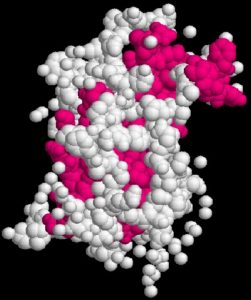
Depending on how it is supplied, HGH is considered both healthy and unhealthy by the same group of medical experts.
Mainstream medicine encourages us to increase our flagging levels of growth hormone through exercise as a healthy way to increase our lifespan.
However, the same medical experts warn us that injecting HGH is accompanied by health-robbing side effects. Furthermore, geroscience theory postulates that HGH reduces lifespan.
Perhaps the contradiction can be solved by assuming that naturally-produced HGH is good for our health, while artificially injecting the hormone is detrimental.
HGH Rejuvenates Our Bodies
For decades, anti-aging merchants have pedaled HGH boosting as a way of rejuvenating our aging bodies. Indeed increasing HGH levels has visible anti-aging effects, including a reduction in body fat while growing muscle, and improving skin tone. Moreover, injections of HGH are thought to restore thymus function, a vital part of our immune system that has severely shrunken by our 50’s and 60’s.
Unfortunately, prolonged injections of HGH come with health-robbing side effects.
Growth hormone releasing hormone (GHRH) may be the solution. GHRH stimulates the production of human growth hormone, rejuvenating aging bodies in a more natural way that may minimize the adverse effects of injectable HGH.
HGH Production
Human growth hormone also called growth hormone (GH) is produced by the pituitary gland, a pea-sized organ that plays a significant role in regulating hormones, vital body functions, and general well being. HGH production is stimulated by growth hormone releasing hormone (GHRH) and ghrelin and is inhibited by the hormone somatostatin.
Growth hormone production declines with age due to many factors including, a decline in GHRH, a decrease in ghrelin, an increase in somatostatin, a reduction in testosterone in men and estradiol in women. Ghrelin and GHRH play substantial roles in the decline of HGH, as ghrelin levels are one-third lower in older adults, and GHRH can decline to as much as 20% of its youthful levels. The declining sensitivity of neurons in the hypothalamus also play a role in HGH decline. Other factors can cause levels of HGH and IGF-1 levels to vary, including a person’s genetic make-up, sex, race, exercise status, stress levels, nutrition, body mass index, diseases, and various toxins.
HGH Stimulates IGF-1
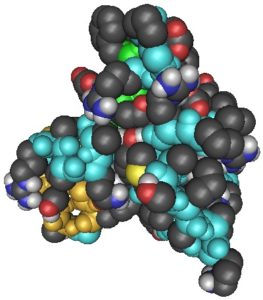
HGH stimulates the production of IGF-1 by the liver, and the two hormones decline in unison.
Insulin-like growth factor is also a youth hormone and supplementing with it combats the age-related loss of muscle mass by both promoting new tissue growth and retarding a form of cell suicide called apoptosis that sometimes erroneously kills healthy cells.
IGF-1 induces new nerves to grow in the brain, and scientists have linked higher levels to improved cognitive performance as enhanced vitality and well being.
Last, but not least, IGF-1 protects the heart and arteries from deterioration with age.
Rudman Reverses Aging With HGH
In 1990, Dr. Daniel Rudman published a controversial study on the effects of HGH in the New England Journal of Medicine. Rudman and his colleagues at the Medical College of Wisconsin conducted a clinical trial of 21 healthy men aged 61 to 81. The researchers treated 12 with HGH and left the remaining men as untreated controls. The study found that after six months of human growth hormone injections, the treated men emerged with bodies that by many measures were almost 20 years younger than the ones they started with, increasing their lean body mass while decreasing fat tissue.
The publication of Rudman’s paper created a craze for HGH replacement as a way to reverse aging. Rudman pointed out that HGH was not a true fountain of youth, and carried side effects. That did not stop others from misinterpreting the results of the study, and heralding human growth hormone as a breakthrough, leading to an upsurge in the use of HGH as an anti-aging drug.
Use of HGH became so high that, in 2003, the New England Journal of Medicine published two articles stating that there was insufficient medical and scientific evidence to support the use of HGH as an anti-aging therapy. Since that time, other researchers have published studies showing that HGH therapy in otherwise healthy adults produces potentially dangerous side effects.
HGH Fad
The DEA considers off-label prescribing of HGH to be illegal, but this has not stopped a booming business of anti-aging clinics who prescribe the hormone to aging adults. The FDA has taken a tough position on HGH, stating
“Unlike other prescription drugs, HGH may be prescribed only for specific uses. U.S. sales are limited by law to treat a rare growth defect in children and a handful of uncommon conditions like short bowel syndrome or Prader-Willi syndrome, a congenital disease that causes reduced muscle tone and a lack of hormones in sex glands.”
As well, enforcement agencies have shut down some clinics and pharmacies that market HGH for bodybuilding and anti-aging uses.
Despite the strict regulations and business closures, HGH-dispensing for anti-aging purposes remains a thriving business
Rejuvenating Effects of HGH
While geroscientists have never conducted a large randomized controlled trial to definitively prove that HGH provides significant anti-aging benefits, they have performed several small studies.
In a systematic review published in 2008, Lui and Bravata found that HGH supplementation does not significantly increase aerobic exercise capacity or muscle strength in healthy individuals. The lack of increase in muscle strength was probably because HGH increases protein synthesis but not cell formation.
Recently, researchers have conducted small clinical trials, with tens of patients, testing low-dose HGH therapy on elderly patients with growth hormone deficiency. The studies found that HGH supplementation increases muscle mass and strength, decreases LDL cholesterol, reduces fat mass, increases bone density and improves the quality of life without significant side effects. The researchers cited that their studies were too small to be reliable, and in the words of Savine & Sönksen:
“Clearly more studies are needed before GH replacement for the elderly becomes established. Safety issues will require close scrutiny, but the data available so far are sufficiently positive to undertake large multicentre, placebo-controlled trials, particularly looking at endpoints associated with prevention of frailty and loss of independence.”
HGH Side Effects
Researchers have observed many side effects in otherwise healthy adults who take high doses of HGH or use it long-term. Side effects include insulin resistance, carpal tunnel syndrome, joint pain, gynecomastia (development of feminine breasts in men ), cardiac hypertrophy (enlarged heart), insulin resistance, enlarged organs, acromegaly (enlarged head), high blood pressure, and fluid retention.
There have been scant studies of the long-term effects of HGH supplementation in people. In the SAGhE study, European researchers investigated the long-term effects of human growth hormone injections in HGH-deficient children. Researchers followed these children for a long time and found that those treated with human growth hormone in childhood were at a small increased risk of death when compared to those in the general population. The FDA issued a Safety Alert on HGH in response to these findings.
Stimulating HGH by Other Means
The medical consensus is that injecting HGH in otherwise healthy people is bad for the health.
However, there is a difference between high levels of HGH due to injections and high levels due to natural mechanisms. Perhaps more natural ways of stimulating HGH are better for health? Growth hormone releasing hormone also declines with age, and stimulating it seems to be a more natural way to boost HGH levels.
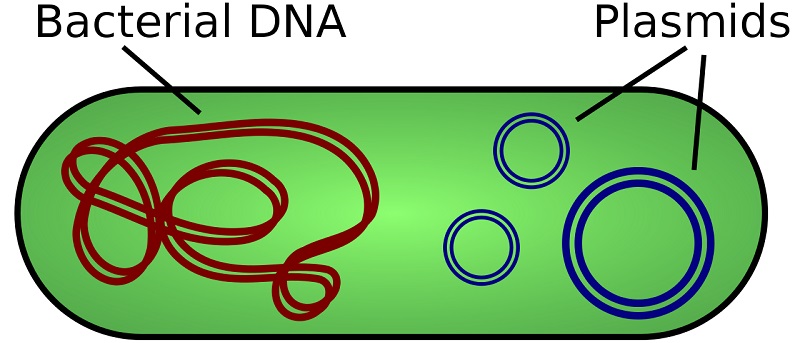
Growth Hormone Releasing Hormone (GHRH) Stimulates HGH
GHRH is a powerful hormone, and small amounts of it go a long way in stimulating HGH production. The problem with GHRH is that it is very expensive and short-acting. GHRH has a half-life of only eight to twelve minutes and requires frequent injections to produce therapeutic levels of HGH.
Scientists have found a novel solution using engineered gene plasmids. Plasmids are circular rings of DNA like those found in our mitochondria. Genetic engineers can insert almost any gene into these rings to manufacture the desired molecule such as GHRH. The modified genes are then inserted into the target body. Once activated, the transcriptional process runs nonstop to make the needed molecule.
Gene therapy with plasmids is not science fiction. This technique is already used in agricultural animals.
As the theory goes, by using the body’s natural mechanisms, plasmid-treated GHRH-producing cells are a more natural way of stimulating human growth hormone. Unlike HGH injections, cell-based production of GHRH within the body produces no measurable spikes of HGH blood levels. Furthermore, in theory, excess production of HGH is prevented by the feedback loop provided by the body’s natural endocrine system. The cost of a DNA vaccine-based GHRH therapy would be significantly lower than the cost of the regularly injected drug and saves the time and inconvenience of daily injections.
Brian Hanley’s GHRH Boosting Gene Therapy
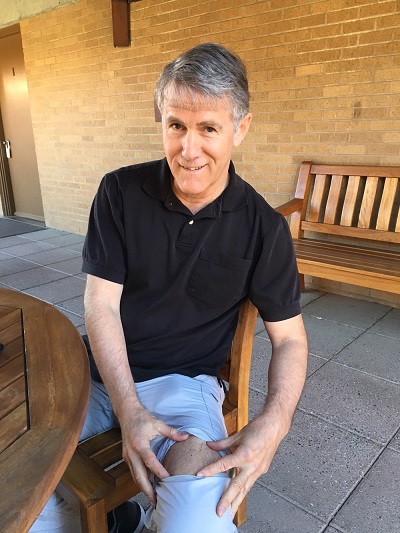
Instead of waiting for clinical trials, a researcher named Brian Hanley has started the highly risky practice of experimenting on himself.
Hanley is the founder of the one-man company called Butterfly Sciences which focuses on boosting HGH with plasmid therapy.
According to an interview with Hanley in MIT Technology review, the 60-year old began the risky experiment in June of 2016. At Hanley’s request, a doctor injected copies of a plasmid modified gene designed to manufacture GHRH. Hanley, a Ph.D.-level microbiologist had designed this modified gene and ordered it from a research supply company. After injecting the new gene, the physician plunged two pointed electrodes into Hanley’s leg, passing a current that caused the muscle cells to absorb the new DNA.
Research Study on GHRH Boosting Plasmid Therapy
According to a 2006 study by Ruxandra Draghia-Akli and colleagues, plasmid-based gene therapy boosted the GHRH levels of healthy dogs, “without any systemic adverse effects,” and more notably, rejuvenated cancer-ridden geriatric dogs, boosting their IGF-1 levels and improving their health for at least a year. According to the authors of the study,
“We have observed increases in weight, activity level and exercise tolerance in addition to improvement and maintenance of hematological parameters. The overall long-term assessment of the treated dogs showed improvement in quality of life that was maintained throughout the study period.”
Do High Levels of HGH Shorten Lifespan?
Gene therapy promises to boost our HGH levels in a way that mimics our natural processes. However, is more human growth hormone good for us in the long run?
While controversial, the prevailing opinion among geroscientists is that increasing HGH levels will decrease lifespan, even if done so using natural methods such as GHRH. This is based on the theory that human growth hormone detrimentally stimulates key longevity pathways. The various forms of evidence to back up this claim are weak because they are based on observational human and animal studies.
HGH Deficient Animals and Humans Live Longer
Observational studies show that animals and humans who are deficient in human growth hormone live longer. The prospective Paris study found that people with high HGH levels had higher mortality rates. Animal studies show a similar correlation. For example, the Ames Dwarf is a mutant strain of mouse that lacks the gene for GH and lives 50% longer than other mice of the same species. Moreover, other mice with deficiencies in GH or IGF-1 genes also live longer, while mice with extra copies of these genes have shorter life spans.
However, the data damning IGF-1 is not consistent. The results linking lower IGF to lifespan do not apply across all rodent species. In fact, sometimes lower IGF-1 levels are unhealthy. For example, in dwarf mice, low IGF-1 levels lead to symptoms of diabetes such as insulin resistance and cardiovascular disease, when the rodents are fed a high-fat diet.
The Laron Dwarf Argument

The case of the Laron Dwarves has frequently been offered to support the argument that low levels of IGF-1 increase lifespan. However, the example of the Laron Dwarves is a weak argument and lacks controls.
Down south in Ecuador are villages full of people born with a genetic defect that causes a form of dwarfism known as Laron’s Syndrome. As a result of their genetic defect, Laron dwarfs are not only short in stature, but also have high levels of HGH, but low levels of IGF-1.
Laron Dwarfs have symptoms of premature aging, including wrinkling and obesity.
Despite having high levels of insulin, they never develop diabetes. Some reports also suggest that Laron Dwarves have a lower incidence of cancer. None of these findings matter much, as researchers are divided as to whether Laron Dwarves live longer or shorter lives as a result of their genetic defect.
IGF-1 Linked to Cancer
Higher levels of HGH lead to high levels of IGF-1, and researchers have linked increased IGF-1 levels in older adults with cancers of the breast, prostate, and colon. On the flip side, individuals who have an abnormality in IGF-1 receptors, which reduces the impact of high IGF-1 levels, are shown to live longer.
While IGF-1 levels are suspected as a risk factor for cancer, the correlative evidence is weak and the data subject to different interpretations.
Bottom Line
- Injecting HGH in an otherwise healthy adult is hazardous to the health. However, that does not mean increasing human growth hormone by natural means is also detrimental.
- As for naturally-produced HGH and IGF-1, the arguments damning high levels of these hormones are largely theoretically and based on correlation and weakly-supported evidence.
- The argument for stimulating HGH levels with GHRH is not so strong either, as it is supported by short-term animal studies.
- Self-experimenting with gene therapy is risky and endangers one’s health.
- GHRH enhancement with plasmid therapy holds promise as a disease treatment strategy and potential age-reversing therapy, however, more studies need to be conducted before it is considered safe.
Related Articles
- Watch a short clip on gene editing in this video report on the Future of Medicine.
- CRISPR 2.0 – New Ways to Edit Genes in Our Bodies – a video showing CRISPR improvements.
- Learn how a novel Gene Therapy for Blindness May Soon Be Reality.
- Microsoft’s Bill Gates to Genetically Engineer Laser Lit Mosquitos.
- MIT researchers discover a revolutionary way to do CRISPR gene editing with nanoparticles.
- Doctors report “mind-blowing” results of gene therapy trial for hemophilia A.
- Scientists re-engineer a stealth virus that holds promise for cancer therapy.
Show Us Some Love
- One click helps us spread the word – Show some love and share this post on your social media account and share it with your friends. It only takes one click on any of the social media links on this page.
- Follow us on social media – For more articles, follow us on Google+ or Reddit
- Sign up for our email list – We use your email to notify you of new articles. We won’t spam you, and we won’t share your email address. Cancel at any time.
- Tell us what you think – Please scroll down to enter your comments.
References
Antonio Regalado. One Man’s Quest to Hack His Own Genes. MIT Technology Review. January 10, 2017. Link.
Morley, John E. Scientific overview of hormone treatment used for rejuvenation. Fertility and Sterility, Volume 99, Issue 7, 1807 – 1813. 2013. Link.
Sattler, Fred R. “Growth Hormone in the Aging Male.” Best practice & research. Clinical endocrinology & metabolism 27.4 (2013): 541–555. PMC. Web. 1 Nov. 2017. Link.
Banks, William A. et al. “Effects of a Growth Hormone-Releasing Hormone Antagonist on Telomerase Activity, Oxidative Stress, Longevity, and Aging in Mice.” Proceedings of the National Academy of Sciences of the United States of America 107.51 (2010): 22272–22277. PMC. Web. 1 Nov. 2017. Link.
Maison, Patrick et al. “Growth Hormone as a Risk for Premature Mortality in Healthy Subjects: Data from the Paris Prospective Study.” BMJ : British Medical Journal 316.7138 (1998): 1132–1133. Print. Link.
Nass R. Growth hormone axis and aging. Endocrinol Metab Clin North Am. 2013 Jun;42(2):187-99. doi: 10.1016/j.ecl.2013.02.001. Epub 2013 Mar 14. Link
Morley, John E., Stephan von Haehling, and Stefan D. Anker. “Are We Closer to Having Drugs to Treat Muscle Wasting Disease?” Journal of Cachexia, Sarcopenia and Muscle 5.2 (2014): 83–87. PMC. Web. 1 Nov. 2017. Link.
Mary Lee Vance. Can Growth Hormone Prevent Aging? N Engl J Med 2003; 348:779-780. February 27, 2003. DOI: 10.1056/NEJMp020186. Link.
H Liu; DM Bravata; I Olkin; et al. (May 2008). “Systematic review: the effects of growth hormone on athletic performance.” Annals of Internal Medicine. 148 (10): 747–58. PMID 18347346. doi:10.7326/0003-4819-148-10-200805200-00215.
Alexopoulou O, Abs R, Maiter D (2010). “Treatment of adult growth hormone deficiency: who, why and how? A review”. Acta Clinica Belgica. 65 (1): 13–22. PMID 20373593. doi:10.1179/acb.2010.002.
Savine R, Sönksen P (2000). “Growth hormone – hormone replacement for the somatopause?”. Hormone Research. 53 (Suppl 3): 37–41. PMID 10971102. doi:10.1159/000023531.
Nicholas Wade. Ecuadorean Villagers May Hold Secret to Longevity. NYTimes.com. February 16, 2011. Link.
Ruxandra Draghia-Akli, Melissa A. Pope, Patricia A. Brown, Amir S. Khan. Plasmid-Based Expression Technology Using Growth Hormone Releasing Hormone: A Novel Method for Physiologically Stimulating Long-Term Growth Hormone Secretion. Combinatorial Chemistry & High Throughput Screening. Volume 9, Issue 3, 2006. DOI: 10.2174/138620706776055502. Link.
Disclaimer
Diagnosis, Treatment, and Advice: This article is intended for educational and informational purposes only and is not a substitute for qualified, professional medical advice. The information and opinions provided herein should not be used during any medical emergency or for the diagnosis or treatment of any medical condition. Self-experimenting with gene therapy is dangerous to the health. Experimental therapies carry a much higher risk than FDA-approved ones. Consult a licensed and qualified physician for the diagnosis and treatment of any and all medical conditions. Call 911, or an equivalent emergency hotline number, for all medical emergencies. As well, consult a licensed physician before changing your diet, supplement or exercise programs. Photos, Endorsements, & External Links: This article is not intended to endorse organizations, companies, or their products. Links to external websites, mention or depiction of company names or brands, are intended for illustration only and do not constitute endorsements.
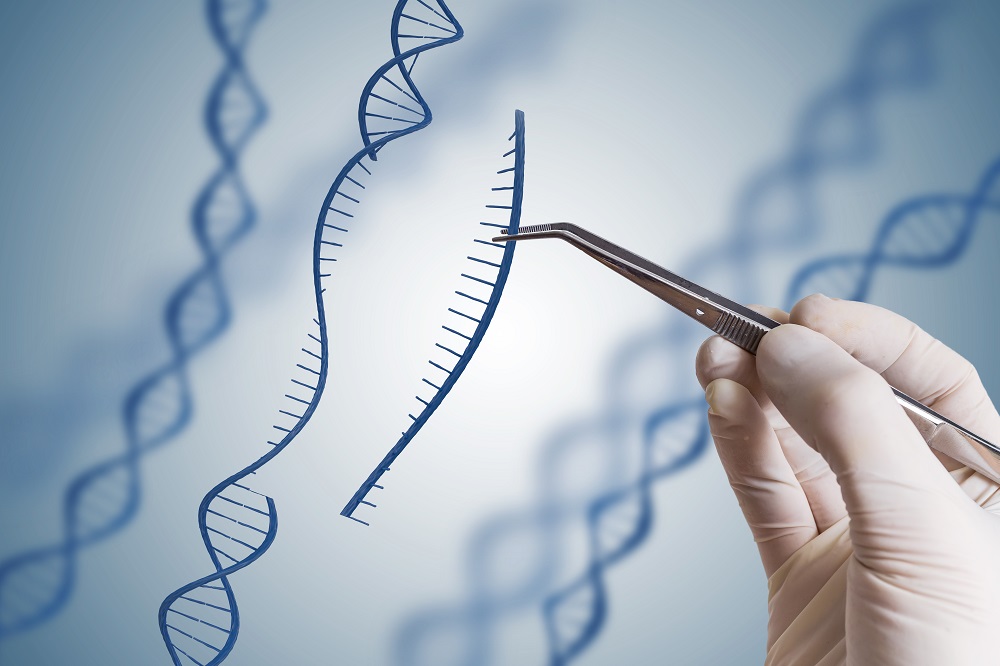
all paragraphs in this text are oriented